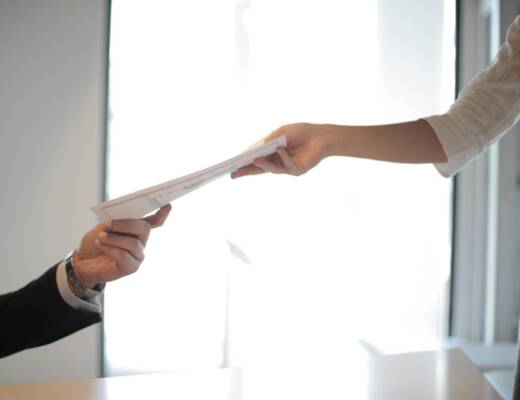Opting for a unique design in an email signature holds more significance than commonly perceived, given its historical context. This signature mirrors your brand’s essence, the nature of your business, and the core services you offer. A well-formatted signature can leave an indelible first impression on its recipients. By referencing an
email signature example, you can comprehend the intricacies of crafting apt and inventive signatures, facilitating the design of a customized signature for your business correspondences.
Moreover, the identity inherent in your email is of interest to the recipient, heightening their engagement. This amplifies the role your enterprise plays in fostering effective dialogue. Pondering on devising a distinctive branded email signature? The Outlook signature generator offers an ideal solution, empowering you to design innovative signatures that augment your business’s visibility.
Follow effective practices for creating creative email signatures
Consistent communication within your enterprise is greatly enhanced by email signatures, establishing trust and maximizing benefits. They offer more than just appending a name or designation. Utilizing signs and banners also efficiently promotes your enterprise, forthcoming events, and fresh blog articles, among others. Recent studies indicate that daily, countless business emails traverse the digital realm. Hence, the potential for devising a unique email footer is vast and crucial. Smart and intentional application of email signatures can bolster your promotional endeavors, projecting a polished image and boosting revenues.
What is a modern email signature?
An email signature is essentially a segment of text in an email that conveys primary details about the sender (such as name, role, and contact info). View these up-to-date email signatures as virtual business cards. Predominantly meant for outward correspondence, sizable corporations also utilize them for intra-office communications. Business emailing thrives on reciprocal exchanges. Recognizing the recipient allows us to tailor the message aptly. This facet makes email footers an impactful tool in professional arenas.
What should it contain? What is its essence?
A proficient email signature strikes a balance between design, relevance, and clarity. As you craft one, prioritize details that resonate with your recipient. After all, an effective signature serves not just as an identifier but also as a bridge to meaningful communication. Basic information you should include:
The main concept of modern email signatures is to identify the sender and learn about the role of the sender in the business organization in which he works.
Read more about Outlook signature generator to learn more about the role of modern email signatures.
What is a secure digital signature?
A secure digital signature is a cryptographic method used to verify the authenticity and integrity of digital messages or documents. It ensures that the content has not been altered and confirms the identity of the sender. Secure digital signatures use encryption techniques, typically involving a private key to sign the document and a corresponding public key to verify the signature. They provide:
Authentication – proving the signer’s identity
Integrity – ensuring the content has not been changed
Non-repudiation – preventing the signer from denying their involvement
Secure digital signatures are widely used in electronic contracts, emails, software distribution, and legal documents to provide trust and security in digital communication
Offers of email signatures
Uniformity is key when it comes to email signatures. Choosing the right font in alignment with your brand’s guidelines ensures a polished appearance. Always opt for a professional email handle. Craft a captivating email swiftly with the aid of email template designers. Devote effort into devising an enlightening and imaginative email footer through careful strategizing. The priority in email signatures follows a top-down approach. So, emphasize the pivotal details first, leading recipients’ focus toward crucial elements like your name, contact, or emblem. This facilitates swift comprehension of essential content. Recognizing that readers might skim, fine-tune your signature for clear and compelling communication.
Create a modern design
Keep your email signature concise, ideally within 6-7 lines. Refrain from oversharing; it’s a signature, not an autobiography. Also, ensure you exclude any sensitive personal details. Be minimalist with design elements to maintain clarity. Text alignment and structured layout are vital in making your signature legible and appealing. Segment the content for easy readability. Aim for clear and engaging content in your signature that resonates with readers. Proper spacing between elements enhances the signature’s aesthetic appeal. A well-thought-out design ensures the signature is sophisticated and captures the reader’s attention.
Use only one or two colors in the design
Aim for a minimalist design in your email signature. Limit the color palette to avoid overcomplicating its look. Also, research suggests that simpler color schemes are more memorable. The colors you choose can influence how the information is retained. Ensure that yours reflects your understanding of color coordination, aligning with your brand’s style and ethos.
Avoid trendy web fonts
If a specific web font isn’t available on the reader’s device, a fallback font will be displayed. It’s wise to opt for a universally accepted font like Arial or Times New Roman to avoid discrepancies.
Emphasize critical details using bold or enlarged fonts. A user-friendly, responsive email signature design is not only crucial but also influential. There shouldn’t be any need for users to zoom or pan to view the signature. Similarly, both your email content and signature should adapt seamlessly to various devices. This principle isn’t exclusive to email signatures; all promotional content should be
optimized for responsiveness. Thanks to contemporary software, crafting mobile-adapted email signatures and content is a breeze.
What is the optimal size of the email signature header?
The ideal size for an email signature often hinges on the audience’s preferences. Do they frequently check emails? And if so, on which device – desktop or mobile? Mobile screens typically range between 320 and 500 pixels in width. Hence, aim for one that’s 320 pixels wide. For desktops, a standard width is around 600 pixels. Suitable formats for these dimensions are JPEG or GIF. It’s crucial for the image to remain sharp without any blur. To ensure fast loading times, keep the image size under 50 KB. There are two
efficient methods to incorporate an image into your signature: embed it directly or link to an external source. Additionally, images can be showcased as attached files.







